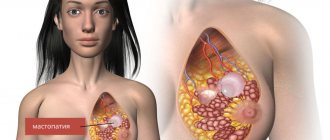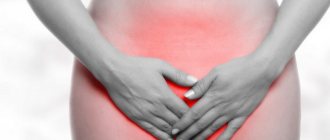What happens with thrush?
This is the name of a common genital disease - candidiasis, which is fully manifested more in women. Men also sometimes suffer from pathology, but more often they are carriers of microorganisms. Candida is a bacteria of the genus of fungi. They are considered opportunistic because they can be present on the mucous membranes of a healthy person without causing harm.
The disease occurs when favorable conditions are created for the growth and reproduction of candida in the vagina. Colonies populate areas of the mucosa, covering them with a dense white layer reminiscent of cottage cheese. As a result of the vital activity of microorganisms, an inflammatory process occurs. The vagina and labia become swollen and red. Itching from irritation of the mucous membrane appears, as well as burning and pain.
The body fights the thrush, causing the curdled discharge to be rejected. The production of your own mucous secretion is difficult, so dryness appears, which is noticeable during sexual intercourse. After intercourse, microcracks and tears may even occur in the inflamed vagina, which further aggravates the condition.
Over time, the symptoms of the pathology subside, as microorganisms and mucous membranes adapt to each other. From the acute stage, thrush flows into the chronic stage. At some point, favorable circumstances give rise to a new outbreak of the disease.
Candida is divided into hundreds of varieties, but only a few cause pathologies in humans. A microorganism called Albicans is more often found in the vagina.
Fact! On average, 20% of women in the world constantly suffer from chronic thrush. In some of this number, microorganisms are present on the mucous membranes from birth.
Why does the disease occur?
The reason for the excessive proliferation of candida lies in the state of the vaginal microflora. The imbalance provides favorable conditions for the life and development of fungi. This happens for the following reasons:
- Treatment with antimicrobial agents cleanses the body of pathogenic and beneficial lacto and bifidobacteria that populate healthy mucous membranes. And for candida, most antibacterial drugs are not dangerous;
- Hormonal disorders also affect the composition of the vaginal microflora. An imbalance occurs with endocrine pathologies, during natural changes in the body and when taking appropriate medications;
- Problems with personal hygiene;
- General decrease in immunity during and after colds;
- Hypothermia inhibits the activity of beneficial bacteria without affecting the vitality of candida and causing thrush;
- Inflammatory pathologies of the genital area;
- Changes in vaginal acidity during pregnancy lead to the proliferation of microorganisms;
- Stressful situations;
- STD.
Attention! A large amount of glucose in the blood has a beneficial effect on candida. Therefore, people with a sweet tooth and diabetics suffer from thrush much more often.
Symptoms of candidiasis
The main sign of the disease is abundant cheesy white discharge with a sour odor. But there are other manifestations of pathology:
- Itching inside the vagina and external genitalia;
- Pain when urinating;
- Feeling of dryness;
- Hyperemic, inflamed, edematous mucosa;
- Symptoms of general infectious intoxication.
Attention! Often there is a symbiosis of thrush with another pathology, which changes the clinical manifestations of the disease.
Laboratory diagnosis of the disease
If a patient has almost all the signs of thrush, but without cheesy discharge, then to confirm the diagnosis, the doctor must refer the patient for testing. What tests will help determine the presence of a fungal infection in the body?
- Vaginal smear . The doctor takes this test during an examination of the patient. The specialist takes a scraping with a special medical instrument from the vagina, urethra, head of the penis, and so on, and applies it to the glass. In the laboratory, the smear is examined under a microscope. If a person is sick with thrush, then the specialist will see Candida fungal cells on the glass.
- Analysis of urine . The laboratory specialist places the taken material in a medium nutritious for fungal infection. If there is Candida fungus in the urine, it will begin to multiply there and form colonies. In this case, the laboratory assistant also determines what can be used to cure the disease. He applies antifungal drugs to the crops and observes how the fungi behave.
Why is there no discharge?
Patients who have had candida in their flora for a long time - from birth or during the chronic course of the pathology - note a much smaller amount of curdled leucorrhoea or their complete absence. This happens because the microorganisms have become integrated into the vaginal microflora and no longer cause such an acute immune reaction as something foreign. The body does not fight thrush, so there is little or no discharge. Increased mucus production and rejection of dead candida colonies occurs only in the fight against immunity.
Complications
If you do not pay enough attention to the treatment of candidiasis, complications may begin. As a rule, they appear with the development of concomitant diseases.
In severe cases, fungal infection can spread to the cervix or fallopian tubes, after which it spreads to nearby organs. If the patient’s immunity is severely impaired due to immunodeficiency, the pathogen enters the blood and spreads throughout the body.
These complications are rare, since the prognosis for treating candidiasis is favorable if the pathology is detected in a timely manner.
Discharge not characteristic of pathology
Instead of thick white and lumpy leucorrhoea, there is clear, beige or yellow leucorrhoea with a thin consistency and in moderate volume. They have the same sourish smell as the curdled ones.
If other pathogenic microorganisms are present together with thrush, for example, chlamydia or trichomonas, vaginal discharge can be completely different: white, yellow, green, transparent, thick and liquid. What they have in common is an aroma that is atypical for normal discharge. It will no longer be simply sour; the causative agents of sexually transmitted diseases give the leucorrhoea the smell of rot, spoiled fish. In addition, discomfort accompanies the discharge.
Attention! You may encounter vaginal itching not due to an infectious disease. There are a number of pathologies that give a similar effect - kraurosis, mucosal atrophy, organ prolapse, proctitis, diabetes mellitus and others.
Itching in the vagina without “cottage cheese” - what can it mean?
Thrush without discharge is indeed possible, although this condition is extremely rare. Often the main symptom of candidiasis is the appearance of a cheesy mass. But if it is not there, but itching is present, then perhaps such a symptom indicates the presence of another disease. Itching can be caused by diseases such as:
- genital herpes,
- papillomas, condylomas,
- uterine prolapse,
- hepatitis,
- ovarian dysfunction,
- diabetes
How to identify thrush?
Diagnosis of candidiasis without discharge is only possible in a medical institution. With such a hidden course, it is impossible to independently determine the cause of discomfort and itching of the genitals.
During a standard survey of a gynecologist, it is necessary to report all observed manifestations of pathology. Then a series of studies will be required:
- General blood and urine tests reveal the inflammatory process;
- A smear from the vaginal wall is checked for the composition and number of microorganisms;
- Bacteriological seeding - propagation of candida under artificial conditions will help determine the type;
- The drug obtained as a result of bacterial culture is tested for resistance to various groups of drugs in order to select the most effective one;
- PCR analysis will detect chlamydia, ureaplasma, mycoplasma, which may accompany thrush.
Interesting fact! Often the doctor is content with only detecting candida in a smear, without conducting additional research. But such tactics may result in the lack of effect of treatment.
Diet
To cope with thrush, it is recommended to adhere to a diet. It allows you to improve intestinal function, after which the development of fungus will become impossible.
For candidiasis, the following products are excluded:
- Alcohol, carbonated drinks. They contain yeast and sugars, which creates ideal conditions for Candida to multiply;
- Sweets;
- Sauces, vinegar;
- Smoked meats, canned food, semi-finished products, fatty foods, fried and pickled foods;
- Blue cheese.
When sick, the diet should include fresh or stewed vegetables and fruits, fish and poultry, grains and beans. Lingonberries, lemon, parsley, beets, broccoli, carrots, Brussels sprouts and seaweed prevent the fungus from multiplying in the body. Candida also cannot tolerate oregano, rowan, string, currants, chamomile and alfalfa. You can make tea from them.
Seafood, eggs, yogurt, pumpkin seeds, wholemeal bread, sesame seeds, flaxseed and olive oil will help speed up recovery.
How to treat thrush without appropriate discharge?
As we have already figured out, the peculiarity of the pathology is that it is a chronic form of the disease. This means long-term therapy with careful selection of drugs is required. In this case, vaginal suppositories alone will not be enough. The following is assigned:
- Antibiotics with antifungal action. Fluconazole and its analogues, for example, Flucostat, Diflucan, as well as Pimafucin based on natamycin, or Clotrimazole, are effective for the destruction of candida. The drugs are very toxic, so the dosage regimen is selected individually;
- Vaginal suppositories and tablets based on the previously mentioned antifungal antibiotics are used together. Complex remedies such as Terzhinan will also be effective against thrush, especially when combined with a bacterial infection;
- Restoring the vaginal immunity plays an important role. For this purpose, after aggressive treatment, suppositories with lactobacilli are prescribed, for example, Lactozhinal or Acylact;
- Therapy is required for the sexual partner who is a thrush carrier. A single dose of Fluconazole at a dosage of 150 mg per capsule will help. It is permissible to use analogues with this active substance.
The patient is given special instructions:
- For the duration of treatment, a ban on sexual relations;
- Maintaining hygiene;
- Refusal of synthetic underwear and thong panties;
- Balanced diet. It is especially important to eat less sweets and baked goods.
For endocrine diseases, it is worth treating in this direction in order to get rid of the factors that provoke the pathology.
Treatment of candidiasis during pregnancy
It is very difficult to cure chronic thrush during pregnancy, because all oral medications are contraindicated for expectant mothers. All that remains is to restrain the proliferation of fungi in the vagina before childbirth. For this purpose, Pimafucin suppositories are used, as well as Livarol, Terzhinan and Clotrimazole after the 1st trimester. Hexicon is less effective, but safer, and can be used for alternation.
If candidiasis is not treated during pregnancy, the following consequences are possible:
- Infection of a child with microorganisms. In infants, thrush often affects the oral cavity, causes problems with feeding and is difficult to treat, and brings pain to the baby;
- Fungi eat away the walls of the vagina, coupled with the inflammatory process during childbirth, ruptures occur, many of which will go unnoticed and will subsequently bring a lot of trouble to the woman;
- Candida entering the circulatory system, which is very likely during childbirth, causes sepsis. This dangerous condition threatens the patient's life.
Attention! You can soothe itching due to candidiasis using baths and douches with chamomile or calendula decoctions, as well as a soda solution, but they will not be able to get rid of the disease.
Atypical course
Knowing the main symptoms, most women do not even think about whether thrush can be without a characteristic discharge, but with severe itching. The discharge may be yellowish, transparent and may not have a typical consistency.
Women mistake the onset of the disease for inflammation or allergies (itching often occurs during allergic reactions). They begin to use antibiotics and antihistamines without waiting for a diagnosis or doctor’s recommendations. It doesn’t even occur to them that it could be thrush, because there is no characteristic discharge, but the itching does not allow them to forget about themselves.
Antibiotics taken unnecessarily can weaken the body, creating an increasingly favorable atmosphere for fungal growth. By the time typical symptoms appear, the disease becomes chronic and much more difficult to cure.
The absence of characteristic discharge is typical for women who are carriers of the fungus. In this form, the fungus is not widespread; the body is able to control its quantity. According to medical statistics, one fifth of women are carriers. Candida is present in almost every female body, manifesting itself only in a constant desire to itch.
Active spread of the fungus occurs only in suitable conditions. Research suggests that the impetus may be a decrease in immunity. It occurs both from illness and as a result of hormonal changes in the body. Candidiasis often appears during the premenstrual period or during pregnancy.
Important! According to the observations of gynecologists, the absence of cheesy discharge is most typical for the chronic form of the disease.
Treatment errors
Quite often, a woman who feels itching in the vagina associates the symptom with an infection. Further, without understanding which microorganism caused the pathology, she begins to drink any common antibiotic. The consequences develop according to a certain scenario:
- The entire bacterial flora of the vagina dies, except for the candida themselves.
- Without resistance from local immunity, thrush colonizes the entire space.
- The woman experiences increased discomfort - itching, pain, discomfort, discharge.
- Large-scale inflammation causes intoxication of the body. Nausea, weakness occur, and the temperature rises to 37-38 degrees.
- Complications of the pathology develop.
Another common mistake is hiding information about your self-medication. Once upon a time, the patient had already treated thrush by purchasing an advertised drug. But either the medicine turned out to be ineffective, or the woman used it incorrectly. As a result, vaginal candidiasis became chronic. If the doctor is not aware of the entire chain of events, he may prescribe a remedy from the same group, which only relieves symptoms until the next relapse.
Attention! It would be a mistake to treat chronic thrush with folk remedies. Candida is very tenacious and quite aggressive drugs are required to destroy them. Homemade recipes will only improve your well-being for a while.
Forms of manifestation of fungal infection
Thrush can occur in three forms:
- Acute – when signs of the presence of Candida fungi are well expressed. The disease requires long-term treatment, sometimes up to two months, however, the disease responds well to therapy. With properly prescribed and carried out treatment, the infection ceases to bother the person.
- Chronic form - can often be repeated under favorable circumstances for fungi. This type of candidiasis cannot be completely cured, but relapses can be prevented.
- The asymptomatic form is precisely the answer to the question: “Does thrush occur without discharge?” Yes, this happens in rare cases when a person is a carrier of a fungal infection. Then he has no signs of illness.
Prevention of pathology
Patients with a history of vaginal candidiasis should take certain precautions:
- Sexual relations with only one partner or using a condom. Changing oral, anal and vaginal contact without washing the male penis promotes the transfer of microorganisms;
- Hygiene. Washing the genitals daily, as well as after defecation, with running water from front to back. Do not use scented detergents; baby or special soap will do;
- During menstruation, change pads every 3-4 hours and avoid tampons. You cannot use daily journals all the time;
- Dress for the weather. Hypothermia, like overheating, leads to relapses of the disease;
- Normalize weight, hormonal levels and nutrition.
Preventive measures
To prevent thrush from developing, you must adhere to the following recommendations:
- Change your diet. It is advisable to limit the consumption of sweet, spicy and spicy foods, which favor the growth of Candida fungus. An increase in the amount of fermented milk products, fresh vegetables and fruits has a positive effect on a woman’s health. It is recommended to take probiotics.
- Maintain intimate hygiene. It is necessary to wash the genitals twice a day. To do this, you can brew chamomile or oak bark. If soap is used for personal hygiene, it should be neutral and free of fragrances.
- Choose the right underwear. Synthetic underwear has a negative impact on a woman's health. It is better to replace it with cotton that allows air to pass through. In such underwear, the likelihood of diaper rash or irritation is reduced to zero.
- Use condoms during sexual intercourse.
- Give preference to sanitary pads instead of tampons.
- Avoid hypothermia.
- Treat cystitis and urethritis in a timely manner.
- When using hormonal methods of contraception, change them to those that contain less hormones.
- Control the level of physical activity.
- Undergo periodic medical examinations with a gynecologist.
- If you have diabetes, monitor your blood sugar.











